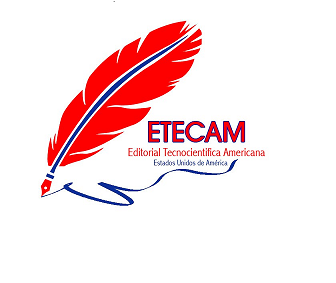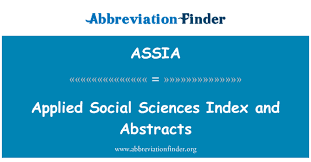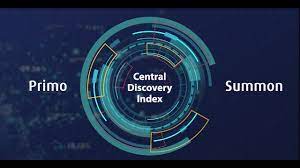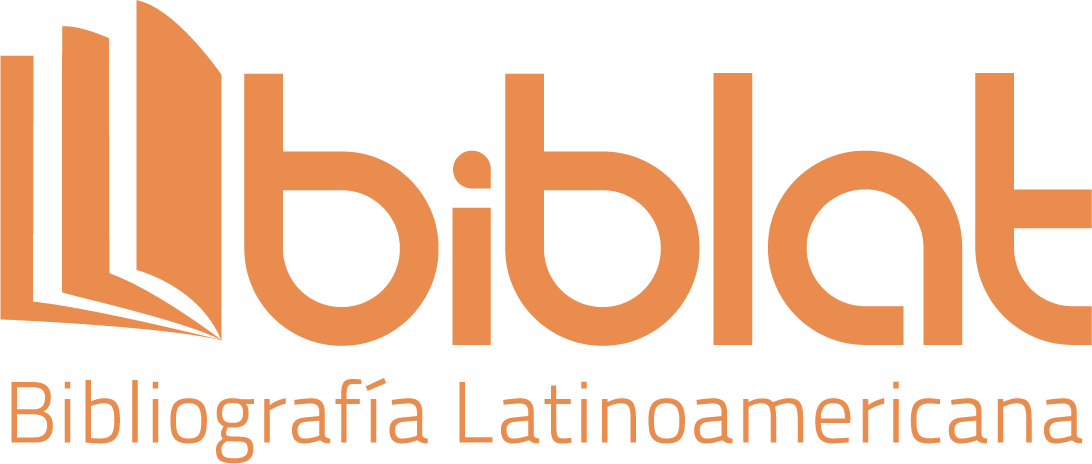Positive reinforcement as a behavior modification technique used in ADHD
DOI:
https://doi.org/10.51736/sa.v7iEspecial%202.230Keywords:
behavior, behavioral modification, home-school card, attention deficit hyperactivity disorder (ADHD), cognitive behavioral and psychosocial intervention.Abstract
This study on the intervention to modify the behavior of a child with Attention Deficit Hyperactivity Disorder (ADHD) in the school environment. It is based on experience as a monitor of children with ADHD. The methodology focuses on a qualitative - quantitative case study that uses the home-school card as the main tool for modifying behavior in a child with ADHD in the school context. Throughout the study, qualitative and quantitative data are collected through direct observation of behavior, interviews with the center's psychologist, and the author's personal reflections on the intervention process. These data could be validated, analyzed and discussed through statistical information processing techniques so that they revealed greater objectivity, relevance and reliability when reaching specific conclusions. Different strategies were used and rewards were established based on the child's preferences, which motivated her participation in the behavior modification process. The results obtained show a significant improvement in the children's behavior, reducing disruptive behaviors and increasing their motivation to attend school. A positive change is observed in their attitude and a greater commitment to complying with the behaviors established on the card. It is concluded that the intervention with the school home card is effective in improving the behavior of children with ADHD in the school environment. Furthermore, the importance of collaboration between school and family is highlighted to achieve positive results in the intellectual performance and emotional well-being of children.
Downloads
References
Alsop, B., Furukawa, E., Sowerby, P., Jensen, S., Moffat, C., y Tripp, G. (2016). Behavioral sensitivity to changing reinforcement contingencies in attention-deficit hyperactivity disorder. Journal of Child Psychology and Psychiatry, 8, 947–956 https://doi.org/10.1111/jcpp.12561
APA. (2005). Guía de consulta de los criterios diagnósticos del DSM-5- https://www.eafit.edu.co/ninos/reddelaspreguntas/Documents/dsm-v-guia-consulta-manual-diagnostico-estadistico-trastornos-mentales.pdf
Bosch, P. (2020). Programa de intervención para la modificación de conducta y la regulación emocional en menores de 8 a 12 años con TDAH. https://riucv.ucv.es/bitstream/handle/20.500.12466/1334/TFG.%20Patricia%20Bosch%20Lo%C2%B4pez_compressed.pdf?sequence=1&isAllowed=y
Campa, R. y Padilla, B. (2022). Entrenamiento en conductas de atención y su impacto en el rendimiento académico en estudiantes de primaria con TDAH. Voces de la educación 7(14), 169-185. file:///C:/Users/ADMIN-MINEDUC/Downloads/DialnetEntrenamientoEnConductasDeAtencionYSuImpactoEnElRe-8843519.pdf
Carboni, A. (2011). El trastorno por déficit de atención con hiperactividad. Psicología, Conocimiento y Sociedad, 1(3), 95-131 https://www.redalyc.org/pdf/4758/475847405007.pdf
Educo. (2023) ¿Qué es la intervención psicoeducativa y qué ventajas aporta? https://www.educo.org/blog/que-es-la-intervencion-psicoeducativa-beneficios
Evans, S. W., Owens, J. S., & Bunford, N. (2014). Evidence-based psychosocial treatments for children and adolescents with attention-deficit/hyperactivity disorder. Journal of clinical child and adolescent psychology: the official journal for the Society of Clinical Child and Adolescent Psychology, American Psychological Association. Division 53, 43(4), 527–551. https://doi.org/10.1080/15374416.2013.850700
Fernández, L, Arias, V, Rodríguez, H y Manzano, N. (2020). Estudio e intervención en niños con Trastorno por Déficit de Atención e Hiperactividad de educación primaria Revista Interuniversitaria de Formación del Profesorado, 34(2), 247-274. https://www.redalyc.org/journal/274/27468087013/html/
Galve, J. (2009). Intervención Psicoeducativa en el Aula con TDAH. Psicología Educativa. Revista de los Psicólogos de la Educación, 15(2), 87-106. https://www.redalyc.org/articulo.oa?id=613765490002
Garrido, J.G., Rubio, C., y Ferrer, J.G. (2015). Aprendizaje y conducta de niños y niñas con TDAH de tres a cinco años. Infancia y Aprendizaje, 38, 790-807. https://dialnet.unirioja.es/servlet/articulo?codigo=5252089
Granados, D. E., Figueroa, S., López, J. D., & Pérez, L. M. (2022). El TDAH como reto para la educación inclusiva en las universidades. Psicoespacios, 16(28), 1–12. https://doi.org/10.25057/21452776.1459
Harrison, J. R., Bunford, N., Evans, S. W., & Owens, J. S. (2013). Educational accommodations for students with behavioral challenges: A systematic review of the literature. Review of Educational Research, 83(4), 551–597. https://doi.org/10.3102/0034654313497517
Hernández, T. (2015). Estudio de la organización del tiempo escolar y su relación con la variable fatiga escolar (tesis de pregrado). Universidad de Granada, Granada. https://digibug.ugr.es/handle/10481/40414
Hernández-Sampieri, R. y Mendoza, C (2018). Metodología de la investigación. Las rutas cuantitativa, cualitativa y mixta. Editorial Mc Graw Hill Education.
Holguín-Yagual, M.L., Bustillos-Proaño, Y.G., y Zúñiga-Delgado, M.S. (2024). Incidencia del refuerzo pedagógico en estudiantes con necesidades educativas específicas del 9° año de educación general básica superior, jornada matutina de la Unidad Educativa Península de Santa Elena periodo 2023 – 2024. MQRInvestigar.
Hulsbosch, A. et al. (2021). Systematic Review: Attention-Deficit/Hyperactivity Disorder and Instrumental Learning. Journal of the American Academy of Child & Adolescent Psychiatry, 60(11), 1367-1381.
Korzeniowsk, C y Ison, M. (2008). Estrategias psicoeducativas para padres y docentes de niños con TDAH. Revista Argentina de Clínica Psicológica, 17(1).65-71. https://www.redalyc.org/pdf/2819/281921796006.pdf
Lizcano-Gómez, K. G., Pinto-Moya, R. E., y Rodríguez, C. X. (2023). Estrategia didáctica para el fortalecimiento de las competencias ciudadanas en educación básica, a través de la apreciación musical como mecanismo de diagnóstico de antivalores. AiBi Revista De Investigación, Administración E Ingeniería, 11(1), 1–7. https://doi.org/10.15649/2346030X.3051
Mendoza-Castro, A y Arroba-Cárdenas, Á. (2021). Refuerzo académico y rezago escolar en estudiantes de educación básica superior. Polo del Conocimiento: Revista científico – profesional, 6 (4), 54-72. https://dialnet.unirioja.es/servlet/articulo?codigo=7927013
Monserrat, M., & Gallardo, R. (2023). Serious Games como entrenamiento de la atención en niños con TDAH. CES Psicología, 16(2), 86–102. https://doi.org/10.21615/cesp.6418
Morin, A. (2021). Behavior Modification Techniques. https://www.verywellfamily.com/what-is-behavior-modification-1094788.
Orozco, Z. (2016). El teatro como estrategia didáctica para mejorar la autorregulación de la conducta en niños con TDHA. Escenarios. 10(1). https://www.researchgate.net/publication/301707263_El_teatro_como_estrategia_didactica_para_mejorar_la_autorregulacion_de_la_conducta_en_ninos_con_tdah
Paredes-Cartes, P, y Moreno-García. I. (2021). Competencias Lingüísticas En El Contexto Escolar. Comparación Entre Alumnado Con Trastorno Por Déficit de Atención Con Hiperactividad, Trastorno Específico Del Lenguaje y Desarrollo Normotípico - Linguistic Competences at Schools. Comparison of Students with Attention Deficit Hyperactivity Disorder, Specific Language Impairment and Typical Development. Revista Española de Pedagogía, 79(280), 497–514. https://www.jstor.org/stable/48621963.
Pelham, W., Fabiano, G., y Massetti G. (2005) Evidence-based assessment of attention deficit hyperactivity disorder in children and adolescents. J Clin Child Adolesc Psychol 4(3):449-76. https://pubmed.ncbi.nlm.nih.gov/16026214/
Peña, Z. (2016). El teatro como estrategia didáctica para mejorar la autorregulación de la conducta en niños con TDAH. Escenarios, 10(1). https://doi.org/10.15665/esc.v10i1.727
Rabito-Alcón, M., y Correas-Lauffer, J. (2014). Guías para el tratamiento del Trastorno por déficit de Atención e Hiperactividad: una revisión clínica. Actas Esp Psiquiatr, 42(6), 315-24. http://pediatrasandalucia.org/Pdfs/guiastdah.pdf
Ramírez Pérez, M. (2015). Tratamiento cognitivo-conductual de conductas disruptivas en un niño con TDAH y trastorno negativista desafiante. Revista de Psicología Clínica con Niños y Adolescentes, 2(1):45-54- https://www.redalyc.org/articulo.oa?id=477147185006
Rivera-Flores, G. y Vera-Álvarez, A. (2019). Intervención computarizada para mejorar la atención sostenida en un niño con TDAH. Revista de Psicología Clínica con niños y Adolescentes, 6(1), 16-22.
Rodríguez, C y García, J. (2007). Evaluación e intervención psicoeducativa en el trastorno por déficit de atención e hiperactividad (TDAH). https://www.researchgate.net/publication/261721638_Evaluacion_e_intervencion_psicoeducativa_en_el_trastorno_por_deficit_de_atencion_e_hiperactividad_TDAH
Romero-Ayuso, D. M, Maestú, F., González-Marqués, J., Romo-Barrientos, C., & Andrade, J. M. (2006). Disfunción ejecutiva en el trastorno por déficit de atención con hiperactividad en la infancia. Rev Neurol, 42(05), 265-271. https://neurologia.com/articulo/2004566
Siegenthaler, R. (2009). Intervención multicontextual y multicomponente en niños con trastorno por déficit de atención con hiperactividad subtipo combinado Universitat Jaume. https://dialnet.unirioja.es/servlet/tesis?codigo=103247
Solovieva, Y., Mata, E., Quintanar, L. (2014). Vías de corrección alternativa para el Trastorno de Déficit de Atención en la edad preescolar CES. Psicología, 7(1),95-112 https://www.redalyc.org/pdf/4235/423539423009.pdf
van der Oord, S., y Tripp, G. (2020). How to Improve Behavioral Parent and Teacher Training for Children with ADHD: Integrating Empirical Research on Learning and Motivation into Treatment. Clinical Child and Family Psychology review, 23(4), 577–604
Vaquerizo, J., Estévez, F., & Pozo, A. (2005). El lenguaje en el trastorno por déficit de atención con hiperactividad: competencias narrativas. Revista de Neurología, 41(S01), S083. https://doi.org/10.33588/rn.41s01.2005382
Vicario, M. H., y Santos, L. S. (2014). Trastorno por déficit de atención e hiperactividad. Manifestaciones clínicas y evolución. Diagnóstico desde la evidencia científica. Pediatría Integral, 18(9), 609-23. https://www.pediatriaintegral.es/publicacion-2014-11/trastorno-por-deficit-de-atencion-e-hiperactividad-manifestaciones-clinicas-y-evolucion-diagnostico-desde-la-evidencia-cientifica/
Published
How to Cite
Issue
Section
License
Copyright (c) 2024 Ronald Javier Maridueña Delgado, Marianela Silva Sánchez

This work is licensed under a Creative Commons Attribution-NonCommercial-ShareAlike 3.0 Unported License.






















































